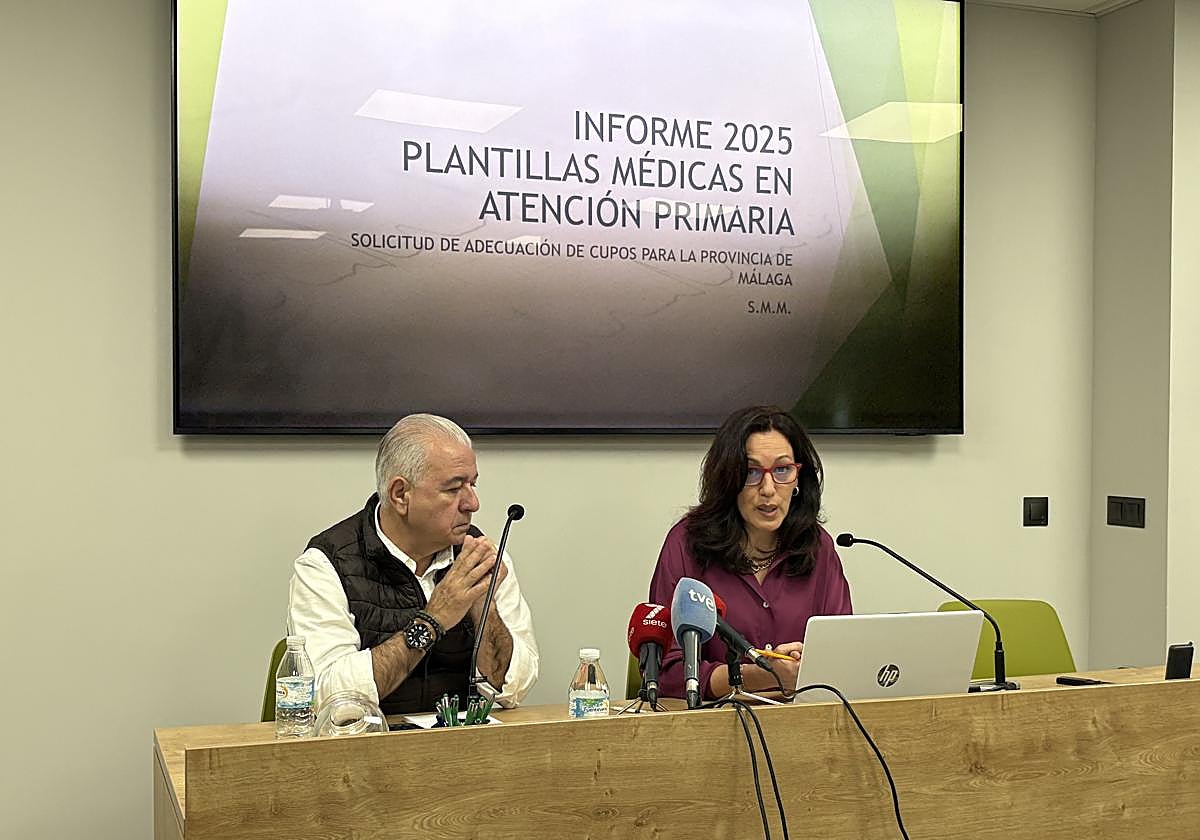

Sections
Highlight

José Antonio Sau
Malaga
Wednesday, 23 April 2025, 14:59
The Sindicato de Médicos de Málaga medical union (SMM) denounced on Tuesday this week the "overwhelming" shortage of family doctors and paediatricians in primary care in Malaga province. To this is added the work overload that the union claims these professionals must endure. As chair of the primary care committee for the SMM, Mari Ángeles Bernal made the point that "Malaga stands out for having a high percentage of family doctors (64%) with over 1,500 patients assigned to them", a figure that is double the national percentage and also higher than several other provinces in Andalucía, those being Seville (53%), Huelva (53%) and Almeria (50%).
The percentage of paediatricians regionwide in Andalucía with more than 1,000 patients assigned to them is 24%, although in this respect it is Almeria that tops the list with 18% of primary care paediatricians having over 1,250 patients on their books. In Malaga the figure is 6% and in Seville 4%.

President of the SMM, Antonio Martín, said that the situation is "critical" and described it as "chronic". He highlighted that fact that, "In recent years, the number of primary care doctors in Malaga has decreased and the population and demand have grown a lot."
The regional health ministry has replied on behalf of the Junta to the SMM that "the data on family doctors and paediatricians in primary care in the province of Malaga reflect a rise of almost 15.5% since 2018. Since 2020 there have been 3% more professionals." To be precise, Malaga province now has 1,425 GPs compared to 1,195 in 2018 and 1,332 in 2020. As for paediatricians, currently there are 211 paediatricians working in the province.
The Junta added that its governing council also approved this Tuesday an increase in staff to further strengthen primary care in the province, specifically in the health centres of Los Pacos in Fuengirola and Ricardo Soriano in Marbella. "This increase in staff numbers has made it possible to create new quotas and optimise existing ones," stated the Junta's response.
Mari Ángeles Bernal, speaking at the press conference held at the union's headquarters, commented that, according to data from the regional health ministry's own website, the number of doctors in primary care has experienced a decrease between 2020 and 2023 of 60 GPs and 39 paediatricians.
She also explained that more and more consultations are being carried out with fewer doctors across the region. In general practice alone, doctors attended to 41.8 million consultations, 754,353 more than in 2020. Paediatrics deals with an average of six million consultations per year.
Bernal was keen to point out that the union also consulted data from SIAP (the portal to the national information system for primary care that collates statistics for the health ministry in central government). She added that this was the data source used to detect the percentage of family doctors in Malaga with over 1,500 patients assigned to them. In Andalucía this figure is 37% higher than the national average. Of this number, 2% corresponds to doctors with more than 2,000 patients assigned to them in this region.
Turning now to specific healthcare districts, the one with the highest percentage of family doctors with over 1,500 assigned patients has historically been the Costa del Sol (92% in total if we include those with 2,000 patients), followed by the Guadalhorce Valley (73%), Malaga city (61%) and the Axarquia (50%).
The highest percentage of paediatricians with over 1,250 patients in the last statistical cut-off was Costa del Sol (6%), which also has 3% of these professionals with over 1,500. Malaga is at 6% and Guadalhorce Valley at 5%. "In most of the health districts there are very high percentages of family doctors and paediatricians with a very high number of patients assigned to them, more than the recommended number and well above the national average," said Bernal.
The ratios of doctors in primary care should be 1,300 patients per family doctor and 900 per paediatrician, so the stats for Malaga province show, according to Bernal, "a permanent deficit in the workforce." To reach the European average, some 650 more doctors would be needed in primary care for Malaga, according to Bernal. However, as a matter of urgency, the province would need "a minimum of 180 to 200 more doctors" in this specific area, 25 of them paediatricians.
In response, the Junta referred to the quotas set out in the region's strategic framework for primary healthcare that were agreed with Spain's inter-regional health council, which recommends that "in primary care the quotas should be 1,500 patients in adult care and 1,000 in paediatrics, although these figures may vary depending on different criteria (territorial, demographic, epidemiological or socioeconomic)." The Junta's response stressed that "Malaga has areas considered difficult to cover, so it is true that there are quotas above this recommendation, although care is fully guaranteed and we are constantly working on adjusting these quotas."
The head of primary care for the Malaga medical union hopes that the implementation of the Junta's 2025-2027 action plan for primary and community care will include "forceful" measures to reverse the situation. "We must add that salaries must recognise the training, responsibility and special difficulty of the work of primary care doctors," said Bernal. She further demanded that a sufficient budget be provided so that there is a real increase in the workforce in health centres, "after stating that the SAS workforce will increase by 7,000 more professionals in 2025."
This work overload generates "for the doctor and for the patient, deficiencies in the quality [of care] provided, a tremendous overload." Lastly, she reminded the press that 80 quota splits were promised (the sending in of reinforcements to absorb the excess workload of colleagues in a given health centre) and she denounced that not even half of these have been met.
Publicidad
Publicidad
Publicidad
Publicidad
Esta funcionalidad es exclusiva para registrados.
Reporta un error en esta noticia

Debido a un error no hemos podido dar de alta tu suscripción.
Por favor, ponte en contacto con Atención al Cliente.

¡Bienvenido a SURINENGLISH!

Tu suscripción con Google se ha realizado correctamente, pero ya tenías otra suscripción activa en SURINENGLISH.
Déjanos tus datos y nos pondremos en contacto contigo para analizar tu caso

¡Tu suscripción con Google se ha realizado correctamente!
La compra se ha asociado al siguiente email
Comentar es una ventaja exclusiva para registrados
¿Ya eres registrado?
Inicia sesiónNecesitas ser suscriptor para poder votar.